POLITICS, SEX, RELIGION. Historically verboten topics of discussion at any polite, social gathering. And yet, in modern society, politics and religion have become inexorably entwined and nearly impossible to avoid. Just try discussing latest news with your hair stylist or barber. Or sitting through a holiday dinner at my parents’ house. And discussions of sex aren’t nearly as taboo as they once were. In fact, thanks to seminal television like Sex and the City and The Bachelor, sex factors into many a casual conversation.
But there does remain a topic so forbidden, so illicit, that it’s never even mentioned as something to not talk about … race. A subject so uncomfortable and controversial for many that it’s been avoided for far too long … to the detriment of many marginalized communities. It’s time we all talk about race — specifically diversity, equity and inclusion in the eyecare industry. It’s time and it’s necessary.
INVISION reached out the several prominent industry organizations to get their take on this issue and what they are doing to make optical more inclusive, as well a professional diversity and inclusion consultant to help us tell eyecare businesses how to take positive action. Lastly, we asked friends of the magazine to share their stories. They’ve graciously shared their personal insights throughout the story to show how this issue has affected them, our colleagues of color.
First, let’s set the stage. Sadly, thanks to current events, there is no shortage of information currently available on the topic.
Perhaps unsurprisingly, when polling the general population it seems the majority of white people don’t necessarily see a race problem in the U.S. but when you remove the weight of the white majority we can see these numbers are biased; quite literally whitewashed.
For example, the 2020 Pew Research Center’s American Trends Panel conducted in September 2020 — after high-profile events like the killings of George Floyd and Breonna Taylor and the arguably performative public condemnation of these events by popular brands — polled 10,093 U.S. adults and found that 49 percent say the country hasn’t gone far enough when it comes to Black people having equal rights with white people. But of the 10,093 U.S. adults who responded, 6,989 of them were white and only 822 were black. If we separate by race, only 39 percent of white Americans believe the country hasn’t made enough progress on racial equality, while 86 percent of Black Americans say they do not have equal rights today. These are some huge disparities and impossible to overcome if the majority demographic refuses to acknowledge the problem.
But will they be the majority demographic for long?
According to U.S. Census projections, beginning in 2045, non-Hispanic whites are no longer projected to make up the majority of the U.S. population. In fact, in 2020, fewer than half of children born — 49 .8 percent — were estimated to be non-Hispanic white.

Now that we’ve set the broader stage, let’s dig into the optical industry. In November 2020, The Vision Council launched the 2020 Diversity, Equity and Inclusion Survey in order to “benchmark the vision care leadership landscape to help organizations within the industry identify opportunities they have to promote diversity, cultivate talent and improve their performance.”
Topline results were promising; 86 percent of respondents believe it is important to focus on improving diversity, equity and inclusion (DEI) in the optical industry and 52 percent agree that the optical industry is committed to improving DEI in the workplace. When you break those numbers down by demographics; 90 percent of non-white respondents say a focus on DEI in optical is important, while 45 percent agree the industry is committed to improving it.
Advertisement
It is gratifying to see that the disparities within our industry are seemingly much smaller than the general population, but there are still some areas that seem ripe for improvement. For example, 60 percent of the total respondents reported feeling represented in marketing used across the optical industry. But when presented to INVISION, this figure did not include the breakdown of responses by race. Of the total respondents to the survey — 1527 people — 64 percent reported being white, 12 percent Black or African American, 8 percent Asian and 7 percent Hispanic/Latino/Latinx, 5 percent two or more races, and approximately 6 percent as others. That’s roughly 36 percent of respondents who do not identify as white. So if 60 percent of respondents said they feel represented in marketing but 64 percent of respondents were in fact white, doesn’t it stand to reason the remaining 40 percent who do not feel represented are comprised of the 36 percent of respondents who do not identify as white? (By the time this issue goes to print, the full report will have been presented by The Vision Council’s Diversity, Equity and Inclusion Task Force and hopefully presents a clearer picture.)
Tarrence Lackran, Director of Partnerships and Programming at The Vision Council, had this to say: “Generally, the survey results indicate that the vision care industry has a strong desire to see more diversity and feel more inclusive, but what we desire does not match the current reality. The Vision Council’s Diversity, Equity and Inclusion Task Force plans to use these results as a jumping off point for our initiatives in 2021. We hope that the survey data will be helpful for other members of the vision care community to use as a reference point when establishing their own diversity, equity and inclusion initiatives.”
It is a commitment Tarrence has a personal stake in. “My experience in the industry as a black man that has been in the room with professionals of all leadership levels has mostly involved unconscious biases,” he shares. “There have been many times assumptions have been made based on the color of my skin. I’ve been in meetings with industry professionals with a white colleague and the assumption is that they are leading the conversation and I report to them, even when the they are my direct report, or it is obvious that I am the decision maker on the topic.
“The society that we live in has us trained to believe the darkest person in the room is the most subordinate. When you think about the TV shows or films you watched when you were younger, who played the role of the executive, superhero, or doctor? Usually it was a white person. Now who played the chauffer, housekeeper, or someone further down the chain of command … usually a person of color. Unfortunately, that mentality has seeped into a lot of professional’s unconscious and influences how we look at leadership when we walk into a room,” he explains. “The responsibility we have is to train ourselves to not make an assumption based on what we see first.”

It is just that sort of task that Black EyeCare Perspective (BECP) was created to accomplish: Making sure that more decision makers of color are in every room. Founded in early 2020 by Drs. Adam Ramsey and Darryl Glover, BECP’s mission is to cultivate and foster lifelong relationships between African Americans and the eyecare industry. Data from the 2010 U.S. Census shows that 13.4 percent of the U.S. population identifies as African American, yet according to BECP, only 1.8 percent of practicing optometrist are African Americans, 3.8 percent of faculty in colleges of optometry are African Americans, and 3.2 percent of students in optometry school are African Americans. The BECP’s 13% Promise is a commitment to work with the industry to get those numbers up to 13 percent and have them better reflect those of the American population. In order to do that, they’ve launched several initiatives, including the Black EyeCare Perspective Pre-Optometry Club (BEPPOC), to assist in the admittance of Black and African American students into accredited optometry programs, and IMPACT HBCU, to create a pipeline for black students from historically black colleges and universities into optometry.
Black EyeCare Perspective has accomplished a lot in its single year of exitance, but the National Optometric Association (NOA) has been dedicated to addressing DEI for over 50 years with a mission of “Advancing the Visual Health of Minority Populations.” In the last five decades, the NOA has provided millions of dollars in scholarships for students of optometry. But according to NOA president Dr. Sherrol A. Reynolds, 2020 has been a particularly challenging year for racial injustice. “The past year has exposed the need for more work in addressing race, diversity, equity, and inclusion (DEI) particularly in our profession,” she shared. “But 2020 also provided opportunities and growth.”
In 2020, the NOA awarded three undergraduate recipients $1,500 inaugural scholarship awards through their “Visioning the Future” HBCU Mentorship Program sponsored by the Dr. Marvin R. Poston Education and Development Foundation and VSP Global. The NOA also launched a new children’s vision initiative, A.C.H.I.E.V.E: All Children’s Health Initiative for Eye and Vision Excellence, in partnership with The National Children’s Center for Vision and Eye Health (NCCVEH) at Prevent Blindness.

The American Optometric Association (AOA) has also seen the importance of addressing DEI issues in the optical industry. Historically, race and ethnicity have not been tracked in the profession outside of optometry school admittance, however in 2021 they are working to collect this data and their goal is to have at least 95 percent data on current doctors by end of the year. In 2020, they formed the Diversity and Inclusion Task Force which is identifying how the AOA can be more impactful as an organization focused on advocacy for doctors, patients and as a profession.
According to AOA president, Dr. William T. Reynolds, “Through the work of the Diversity and Inclusion Task Force, the AOA is listening closely to colleagues from across the profession, and throughout health care, in order to make absolutely certain that optometry leads and serves as an example for our focus on a better future. It is a sustained commitment that will be a part of AOA’s ongoing work.” As such, they are exploring more effective recruitment and leadership development of under-represented minority doctors of optometry and encouraging schools of optometry to work to increase diversity among applicants. This includes working with the Association of Schools and Colleges of Optometry (ASCO) to expand the “Optometry Gives Me Life” campaign’s focus on development of under-represented minority applicants.
Like many, the Opticians Association of America (OAA) too felt very strongly about addressing this topic immediately after the horrific events of this past summer, says Dibby Bartlett, president of the OAA. “As many organizations did, we took a deep look ourselves and the industry and felt the right thing to do was to make some commitments in this area. First, we created a Diversity Committee who meet on a monthly basis. Specifically, we are looking at ways to encourage more diverse participation and inclusivity in the profession of opticianry. Currently we are looking at a video project towards this goal.”
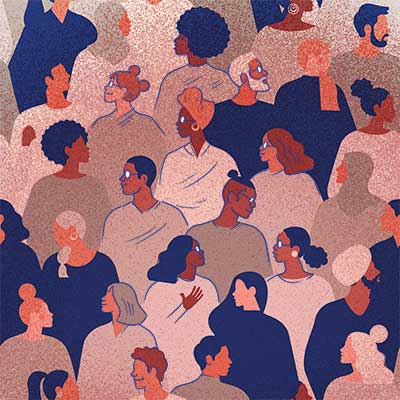 Second, the OAA and its Diversity Committee are planning their annual leadership conference, “Reach For The Stars, A Virtual Leadership Experience” for February 21. Three of the breakout sessions will be dealing with the issue of diversity: “Accepting Diversity, Am I There Yet?” led by Phernell Walker, and two panels titled “Improving Diversity, Equality and Inclusivity in the Workplace, Are You Open To Change?” and “How to Create a Winning Culture in the Workplace.”
Second, the OAA and its Diversity Committee are planning their annual leadership conference, “Reach For The Stars, A Virtual Leadership Experience” for February 21. Three of the breakout sessions will be dealing with the issue of diversity: “Accepting Diversity, Am I There Yet?” led by Phernell Walker, and two panels titled “Improving Diversity, Equality and Inclusivity in the Workplace, Are You Open To Change?” and “How to Create a Winning Culture in the Workplace.”
What has become clear is that 2020 ripped whatever blinders we as a nation still wore when it comes to racial inequalities in this country. These organizations, and their indicatives, are just the start of a long journey toward true and equitable representation in this industry. We can all do our part. Check out our sidebar on how to Take Action and our Resource Guide, available online, to get started.
ENOUGH TALK, TIME TO ACT
We asked Brian McComak (he/him), founder and CEO of Hummingbird Humanity, a diversity and inclusion consultant, speaker, author and facilitator with over 25 years of experience in diversity and inclusion, what small businesses can start working on to ensure their businesses are diverse, equitable and inclusive, and why it’s important.
“Diversity and inclusion efforts are both good for business and the right thing to do,” he explained. “Bringing together people with different backgrounds, in an environment that is inclusive, where employees can be their authentic selves, can foster inventive thinking which has the potential of adding real value to the business. All of us, at some point in our lives, have felt excluded. Taking a human-centered approach to business acknowledges that these people, individually and collectively, make the organization work.”
Advertisement
Small businesses can assess their own degree of diversity and inclusion through one of McCormak’s favorite activates called Trusted Ten. “Write down the 10 people you go to for business advice,” he suggests. “Then, list their identities — gender identity, race/ethnicity, sexual orientation, religion, etc. — If you find that your list of advisors are very similar in their identity, work to intentionally build trusted relationships with individuals who have different lived experiences. Ask for their input, wisdom and counsel.” His second suggestion is to talk with your employees and your customers. Be curious and listen.
Additional things McCormak suggests small businesses can do today to be more inclusive:
- Support minority and women-owned businesses. Choose these businesses as vendors. Ask the companies you partner with to share their DEI plans and commitments with you.
- Engage in your community. Give, through donations and/or volunteering, to an organization that supports marginalized and underrepresented communities. As you develop these relationships, seek to understand how your business can better meet their needs.
- Seek to understand. Commit to learning about the lived experiences of others. Be curious. Books, podcasts, blogs, etc.
- Review the images in your marketing content. Do they depict diverse lived experiences? Or does everyone look the same? How could you demonstrate a commitment to DEI in the language or words that you use in your external messages?

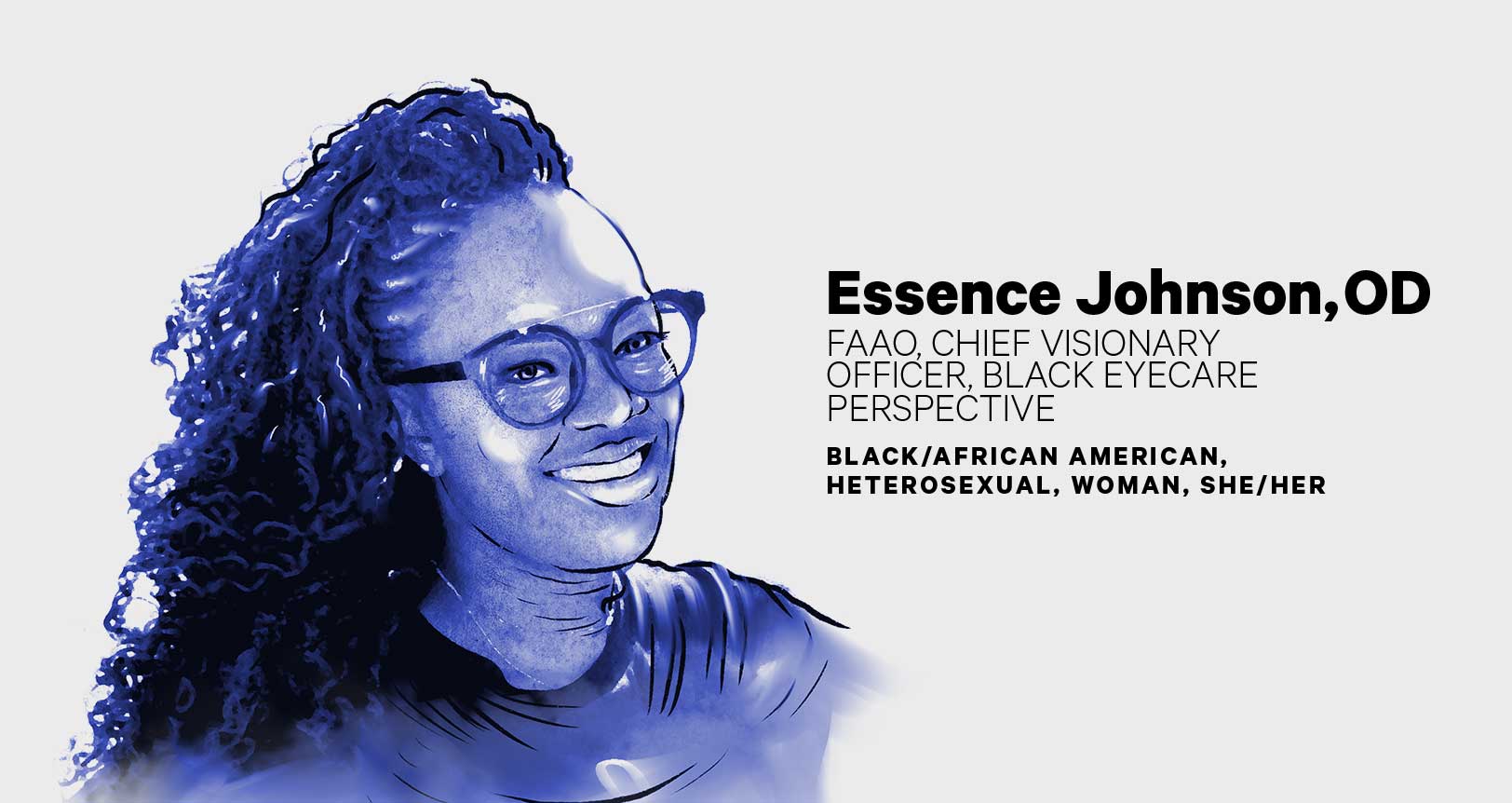
How do you feel people who identify as you do are represented in the optical industry?
That we have only just begun to scratch the surface. As individuals in our small community we are making strides, but in relation to the rest of the population, the opinions and views of the minority gets diluted or buried completely.
Do you believe there is a diversity and inclusion problem in the optical industry?
Yes! We are resistant to anything that challenges the status quo. We are conditioned to believe it is great to be a part of this melting pot. When in actuality a melting pot symbolizes assimilation and creating a society that isn’t accepting of differences or the unique qualities that makes an individual or a culture.
What are the most pressing issues the optical industry needs to address?
- Amplifying minority voices.
- Redefining the “new normal.”
What does a diverse and inclusive optical industry look like to you?
- Using industry professionals as paid ambassadors/models for brands.
- More opportunities for those interested to design to learn the business.
- More exposure of independent eyewear companies, especially black owned companies.
- Becoming more intentional in reaching targeted demographics and introducing products with them in mind.
What would you like to express to individuals who may not believe there is a diversity or inclusion issue in the optical industry?
Representation is important, but inclusion includes how people feel and are being treated when they are invited to the table. Society is evolving and changing, so it’s best to lean into the change while it is happening.
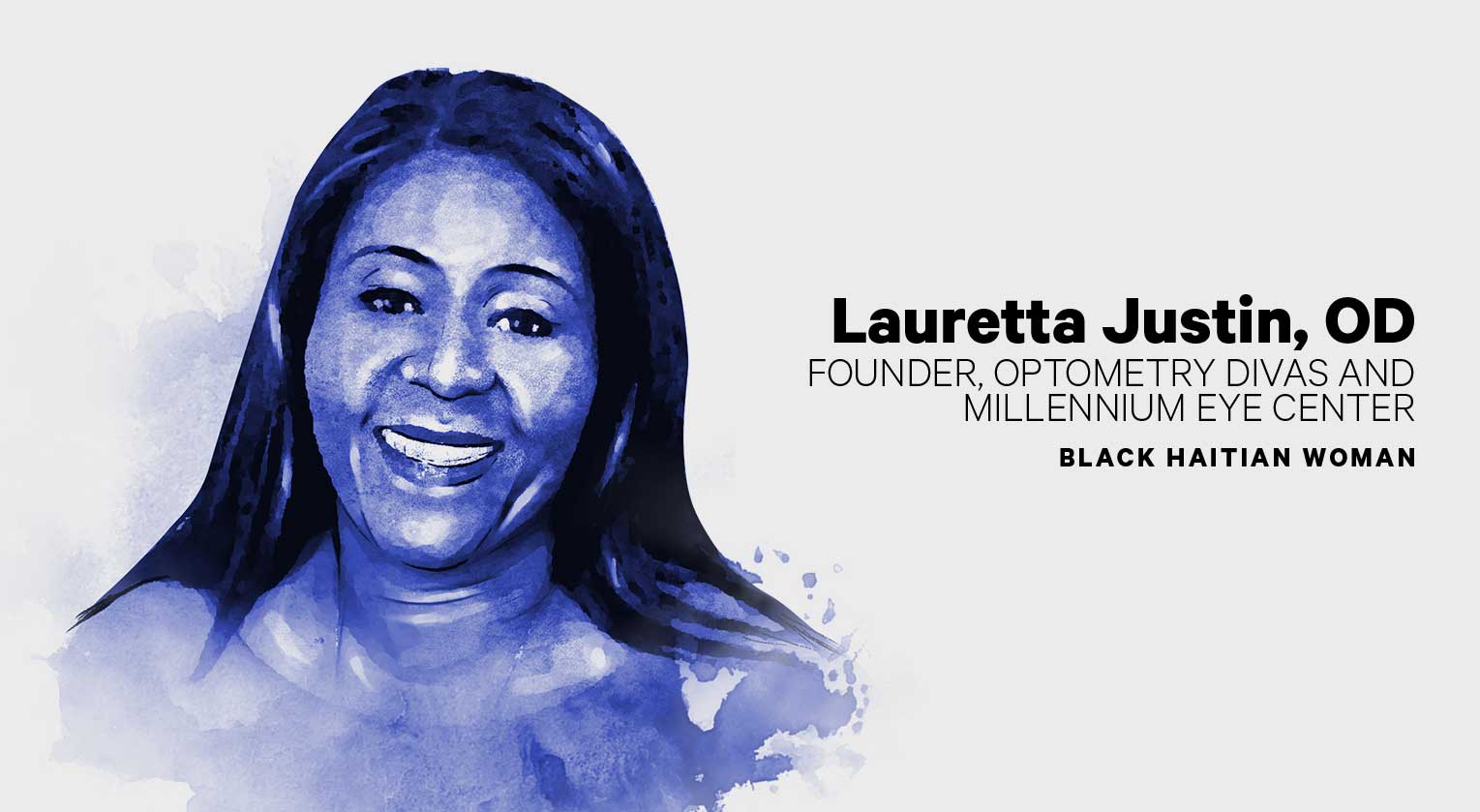
How do you feel people who identify as you do are represented in the optical industry?
There is definitely an underrepresentation of people who identify as I do.
Do you believe there is a diversity and inclusion problem in the optical industry?
Yes of course! Diversity and inclusion, or the lack thereof, is a human problem. It’s not a new problem but we must refuse to tolerate it. We must continue the work of others before us and champion equality.
Do you have an experience you can share where you believe you were treated differently based upon others’ perceptions of your identity?
As a black, female immigrant, I have had many experiences where I was treated differently, such as being asked for coffee at professional events, or patients asking for the “real” doctor. While I may not get terribly offended for being treated differently, I do have a problem with being treated unjustly.
What are the most pressing issues the optical industry needs to address?
We need adequate representation in key leadership positions, in boardrooms, in advisory committees, and key opinion leaders to give us a voice.
What would you like to express to individuals who may not believe there is a diversity or inclusion issue in the optical industry?
It’s common to have patients come in claiming they don’t have a vision problem even when their uncorrected acuity is 20/200. There are those unfortunate souls who, even after seeing the truth, still chose to live in the fog. All any of us can do is put a “corrective lens” on the “eye” of anyone who doesn’t see the issues. What they do with that is their choice. Nevertheless, we must champion equality!
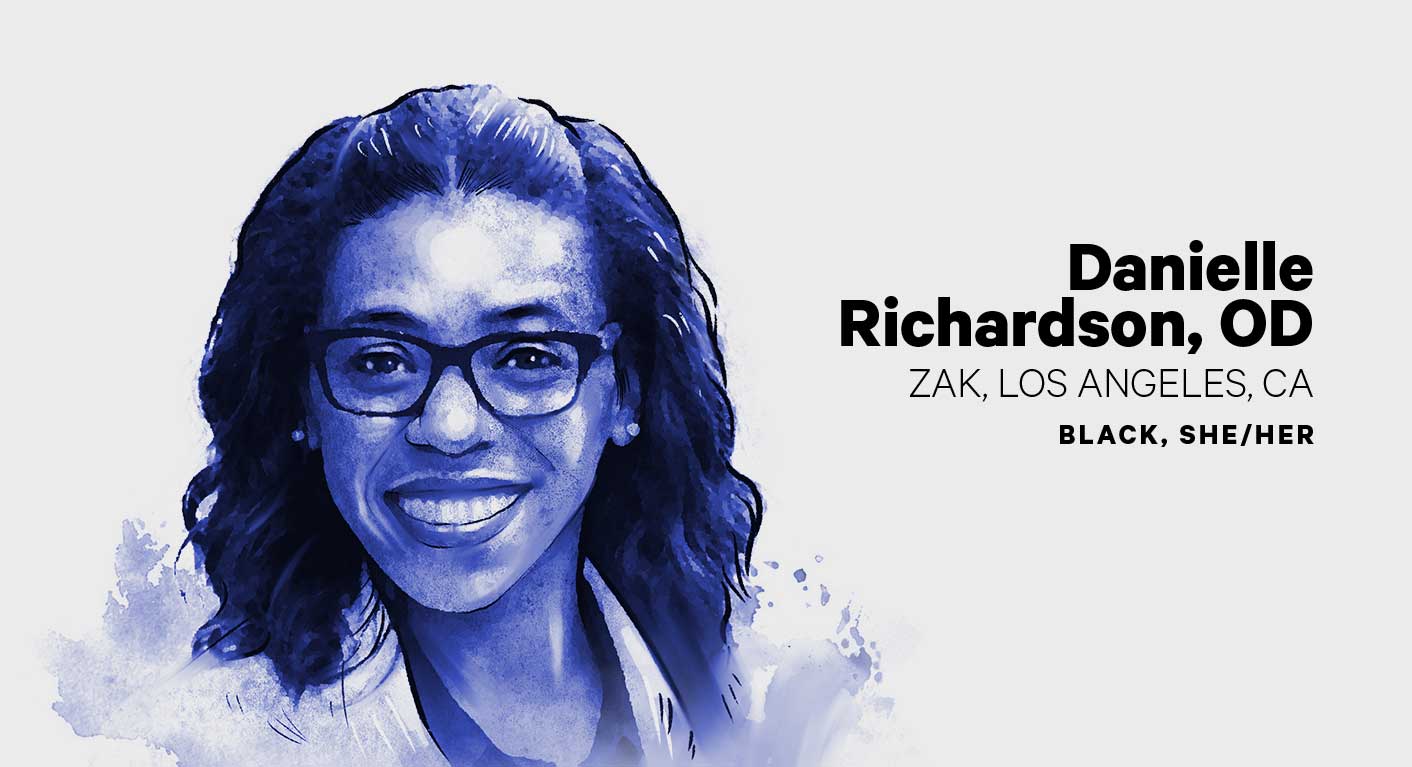
How do you feel people who identify as you do are represented in the optical industry?
Within the industry, I’d say Black people have to be exceptionally talented to earn recognition.
Do you believe there is a diversity and inclusion problem in the optical industry?
There is a diversity and inclusion problem in America and naturally that extends to the optical industry. Diversity is something many are uncomfortable with due to an homogenous upbringing and never having any meaningful interactions different people. Limited exposure to individuals of diverse backgrounds causes a natural inclination to stick with those from the same background. The lack of exposure to diversity leads to a lack of inclusion when diverse people are actually at the table.
Do you have an experience you can share where you believe you were treated differently based upon others’ perceptions of your identity?
I went to school at Indiana University and worked part-time in an office on the outskirts of town. Patients regularly wore Confederate flag memorabilia and a patient once asked to be pre-tested by another associate because he didn’t want a Black person to do it.
What are the most pressing issues the optical industry needs to address?
- Increasing recruitment of talented minority students from HBCUs or other academic institutions.
- Expanding talent pool for top level opportunities.
- Education regarding diversity and inclusion at a smaller scale for Mom and Pop operations, not just corporations
What would you like to express to individuals who may not believe there is a diversity or inclusion issue in the optical industry?
Look around. The optical industry should have diverse representation in alignment with the diversity percentages of the U.S. population.
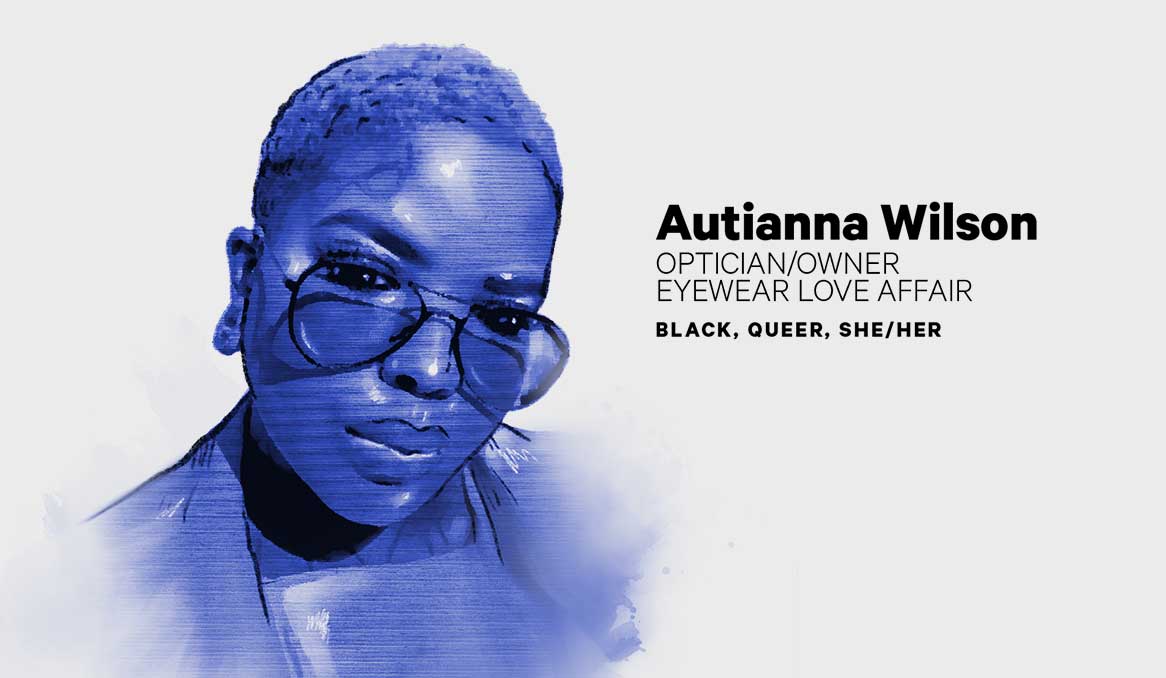
How do you feel people who identify as you do are represented in the optical industry?
I feel like things are getting better for folx who identify as I, but there is still a lot of work to be done.
Do you believe there is a diversity and inclusion problem in the optical industry?
Absolutely.
Do you have an experience you can share where you believe you were treated differently based upon others’ perceptions of your identity?
I have worked in plenty different optical spaces. From corporate to private and independent. At each of those spaces, I was always told to lower myself; from my style, to my tone or my opinions. I have always been a problem in some way by just living. My knowledge, experience and my passion only recently started speaking for me. It’s hurtful and hard to accept that this industry prefers cookie cutter people. Originality and authenticity isn’t what people are looking for, but I choose self-expression over everything.
Advertisement
What are the most pressing issues the optical industry needs to address?
There are so many, but I would say that there needs to be more plus size brown eyewear models. I want to see more FAT people in these editorials and advertisements because eyewear is for everyone, not just society’s standard.
What would you like to express to individuals who may not believe there is a diversity or inclusion issue in the optical industry?
Please take off whatever blinders you’re wearing. Let go of the delusion. And please leave your small town once in a while.
DIVERSITY, EQUITY AND INCLUSION RESOURCE GUIDE
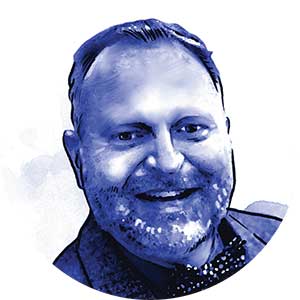
Before starting his own consulting firm, Brian McComak (he/him) was Global Head of Inclusion for Tapestry – the home of Coach, Kate Spade & Stuart Weitzman. He has over 25 years of experience in diversity and inclusion, human resources and operations management. He is an instructor at Lynn University and sits on the DEI Advisory Board for ph.Creative. As a proud member of the LGBTQ+ community, a person with a disability, and the son of a veteran, he is a fierce advocate for all underrepresented groups.
According to Pew Research Center’s American Trends Panel about half (48 percent) of U.S. adults say it’s very important for people to educate themselves about the history of racial inequality in the country. But dig deeper and you’ll see only 42 percent of white people believe that to be true, while 72 percent of Black people do.
If your part of those numbers, or more importantly, if you’re not, Brian McComak of Founder and Hummingbird Humanity has some suggested resources to do just that. Additionally, Tarrence Lackran of the Vision Council has provided a list of black owned frame designers and vendors you can start supporting today.
Black Owned Frame Designers and Vendors Support